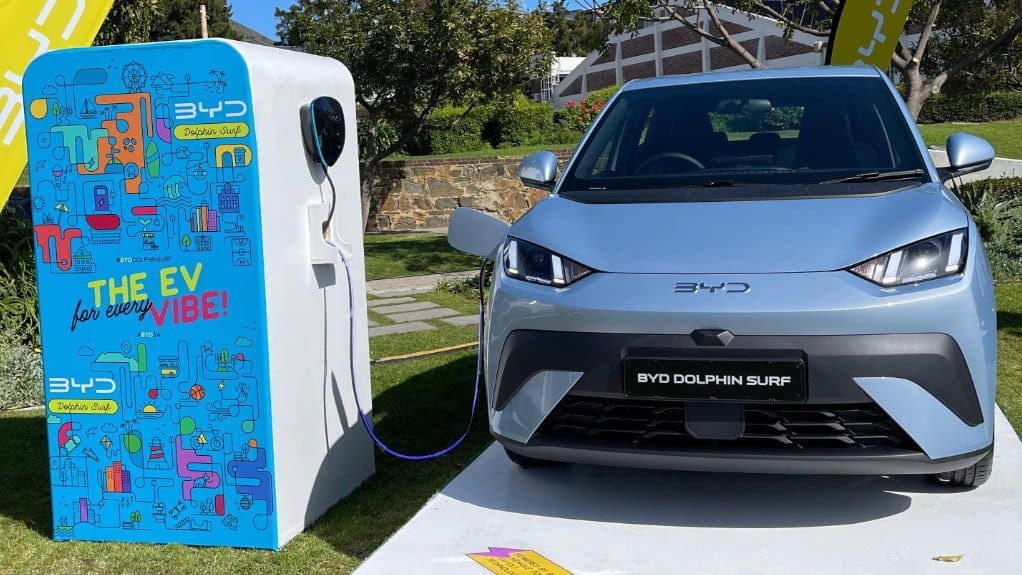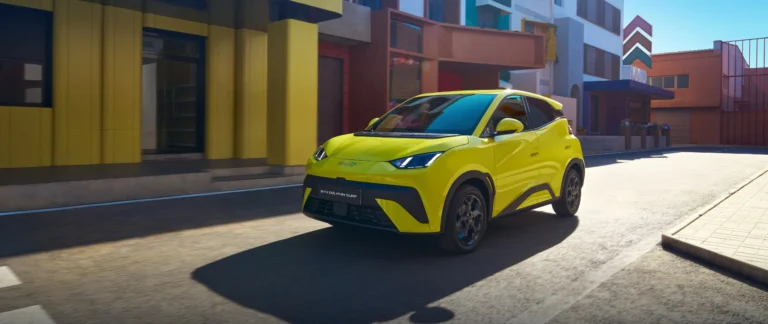If you want to understand the future of a country, look at what it drives. For decades, South Africa’s roads have been dominated by the dependable, fossil-fueled stalwarts of Volkswagen Polo, the Toyota Corolla. the middle class and the rich driven in BMW, Mercedes and Volvo, while the rich cruzing on Range Rovers and Porsche. They were symbols of aspirational, practical mobility. But last week, that status quo was handed a pink slip.
The world’s biggest electric vehicle maker, Build Your Dreams (BYD), didn’t just enter the South African market; it declared war on the internal combustion engine with a weapon designed for mass appeal.
The BYD Dolphin Surf, priced from a startling R339,900, isn’t a luxury statement for the leafy suburbs. It’s a direct, stylish, and calculated challenge to the very heart of our automotive market.
The immediate reaction, of course, is a chorus of practical skepticism, the same we’ve heard in every country before an EV revolution takes hold. “Where will everyone charge?” ask the naysayers, their voices dripping with the certainty of a load-shedding schedule.
But to focus solely on this surface-level concern is to miss the profound, deeper economic and energy transformation already underway. The infrastructure isn’t just coming; it’s being built at a breathtaking pace.
Private players like GridCars, Rubicon, and Chargify are weaving a network through our urban centres. But the real game-changer is national and off-grid.
The development is a R100 million investment from the Development Bank of Southern Africa (DBSA) into Zero Carbon Charge to build a network of solar-powered charging stations every 150 km along national roads. This isn’t just about filling a gap; it’s about building a resilient, renewable-powered infrastructure that leapfrogs the old petrol station model entirely.
Yet, the most compelling narrative, the one with the potential to truly democratise EVs in South Africa, is not just about chargers. It’s about power itself. And it hinges on what might seem the most unlikely of partnerships: between the new Chinese disruptor, BYD, and our own state-owned entity, Eskom, which is reinventing itself. It has manage to keep our lights on for long and may even deal loadshedding a final blow..
Fresh off the introduction of its first electric vehicle (EV) fleet, Eskom has signed a Memorandum of Cooperation (MoC) with BYD Auto South Africa. Dubbed a “Bold step in South Africa’s move toward cleaner mobility” by Eskom, this is more than corporate PR. It is a signal of a crucial institutional shift.
Think about it. This is not a company known for agility or innovation suddenly embracing the technology that could, paradoxically, become one of its most valuable customers and a potential partner in grid stability.

As Eskom’s Agnes Mlambo stated, “Eskom is driving into a cleaner future, not only through our investments in renewable energy and sustainable technologies, but also by enabling affordable and innovative mobility solutions for South Africans.”
This is where an economic analysis kicks in. BYD is unique. It is not just an automaker; it is one of the world’s largest manufacturers of batteries and energy storage systems. Energy integration is its core competency. This partnership provides the two parties room to explore renewable-powered ultra-fast charging hubs and, most importantly, “recycling and repurposing used EV batteries for energy storage and backup systems, and integrating EVs into Eskom’s demand-side management strategies to help balance electricity supply and demand.”
Let that sink in.
Your future car could be more than transport; it could be a mobile power bank for your load-shedding woes and a decentralised node in a smarter, more resilient national grid. This is not a pipe dream. BYD has done this at a massive scale with the State Grid Corporation of China. GM and Ford are piloting Vehicle-to-Home technology with U.S. utilities.
The model is proven.
The success is already tangible.
Gideon Neethling, an engineer at bus service Golden Arrow, reported that with their new smart EV charging system, they are “saving 63% on the energy component of our business.” This is a staggering figure that speaks to the profound economic efficiency of the electric transition.
So, will Eskom and BYD democratise South Africa’s mass market for EVs?
The pieces are all there.
The vehicle is priced for the masses.
The charging infrastructure is being built not for demand, but ahead of it. And the partnership with the national power utility offers a solution to South Africa’s unique energy crisis, rather than being hamstrung by it.
“The BYD Dolphin Surf represents a pivotal moment for electric mobility in South Africa,” says Ming Xing of BYD South Africa. “This isn’t just about making EVs available; it’s about making them a viable, attractive option for everyday South Africans.”
The cynic will see only risk and Eskom’s legacy of failure.
The optimist, however, sees a stunning opportunity: for a state-owned enterprise to reinvent itself at the forefront of a new energy economy, and for a nation plagued by power cuts to harness the technology of the future to finally light its own way.
The revolution is here, and it’s plugged in.

